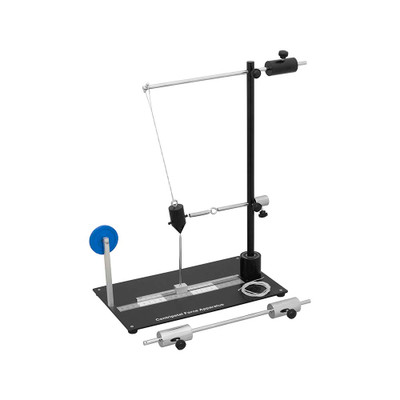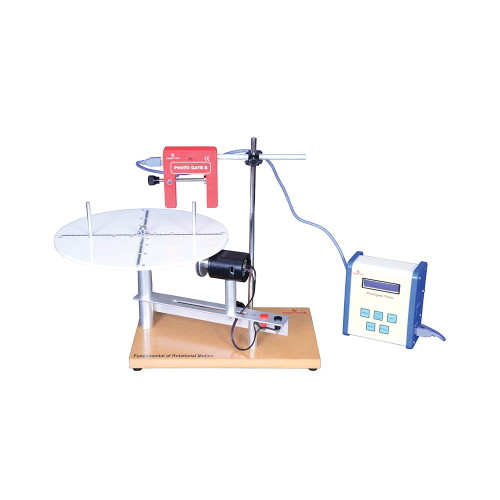Product Overview
Straightforward method to measure the centripetal force. Consistently satisfactory performance makes this apparatus well suited for college physics labs.
Centripetal force is measured by suspending a mass from one end of a horizontal bar supported at the top of a vertical shaft. When the shaft is rotated the mass tends to swing outward, which is opposed by the restoring force of a coiled spring attached to the shaft. At any specific speed of rotation, which is readily determined by visually counting the number of revolutions per minute, the mass will acquire some specific radius of rotation, measured by using the reference indicator. The value of the centripetal force for these conditions may then be computed. This value is then to be compared with the static force necessary to displace the mass to the same radial position, measured by means of a spring scale.
The operator applies torque with his thumb and forefinger on a knurled portion of the shaft located at the bottom. The spring and mass are so chosen that the speed of rotation will be slow enough to be both safe and easily counted. The crossbar is counterbalanced. The 15 mm diameter support shaft rests in a ball-bearing mount that minimizes wobble and friction. Data may be varied by changing the radius of rotation and by increasing the mass. The radius indicator may be adjusted laterally through a range of about 10 cm. The mass can be increased by adding a slotted weight on top of the suspended mass attached to the spring. The entire setup is mounted on a heavy steel base with four rubber feet at corners. Instructions included.
A Variable Inertia Bar accessory is also included. This accessory helps to demonstrate that the torque required to accelerate a flywheel depends upon its moment of inertia rather than its mass. It comprises a steel bar with heavy adjustable masses mounted on each end of the bar and may be clamped at any desired position, enabling inertia to be varied. After mounting the accessory at the top of the shaft, the system is accelerated by a weight (not included) and string. From the weight's change in position with time, students can determine the moment of inertia.












